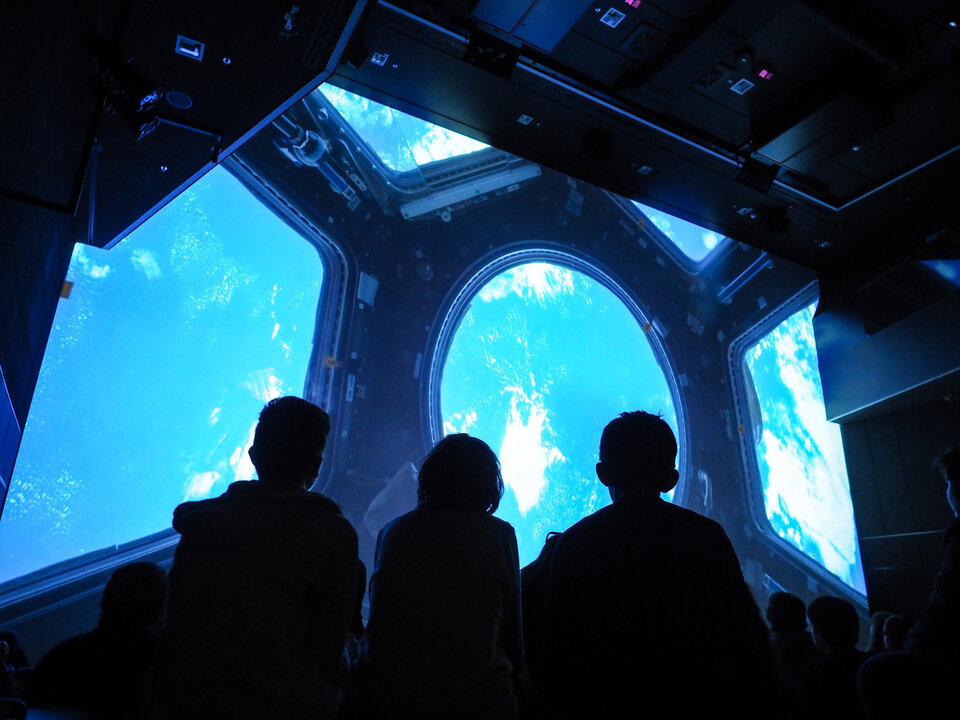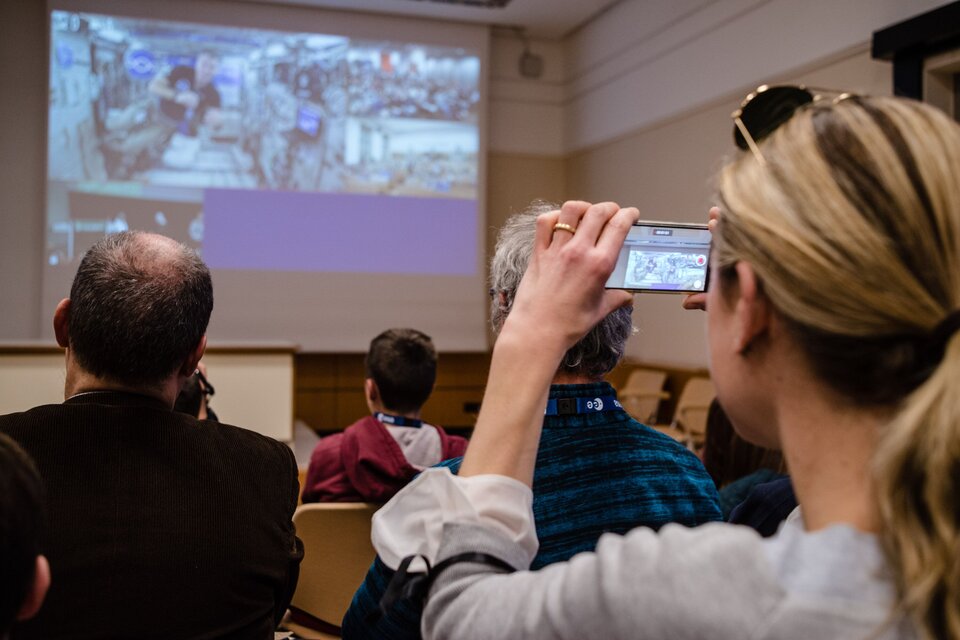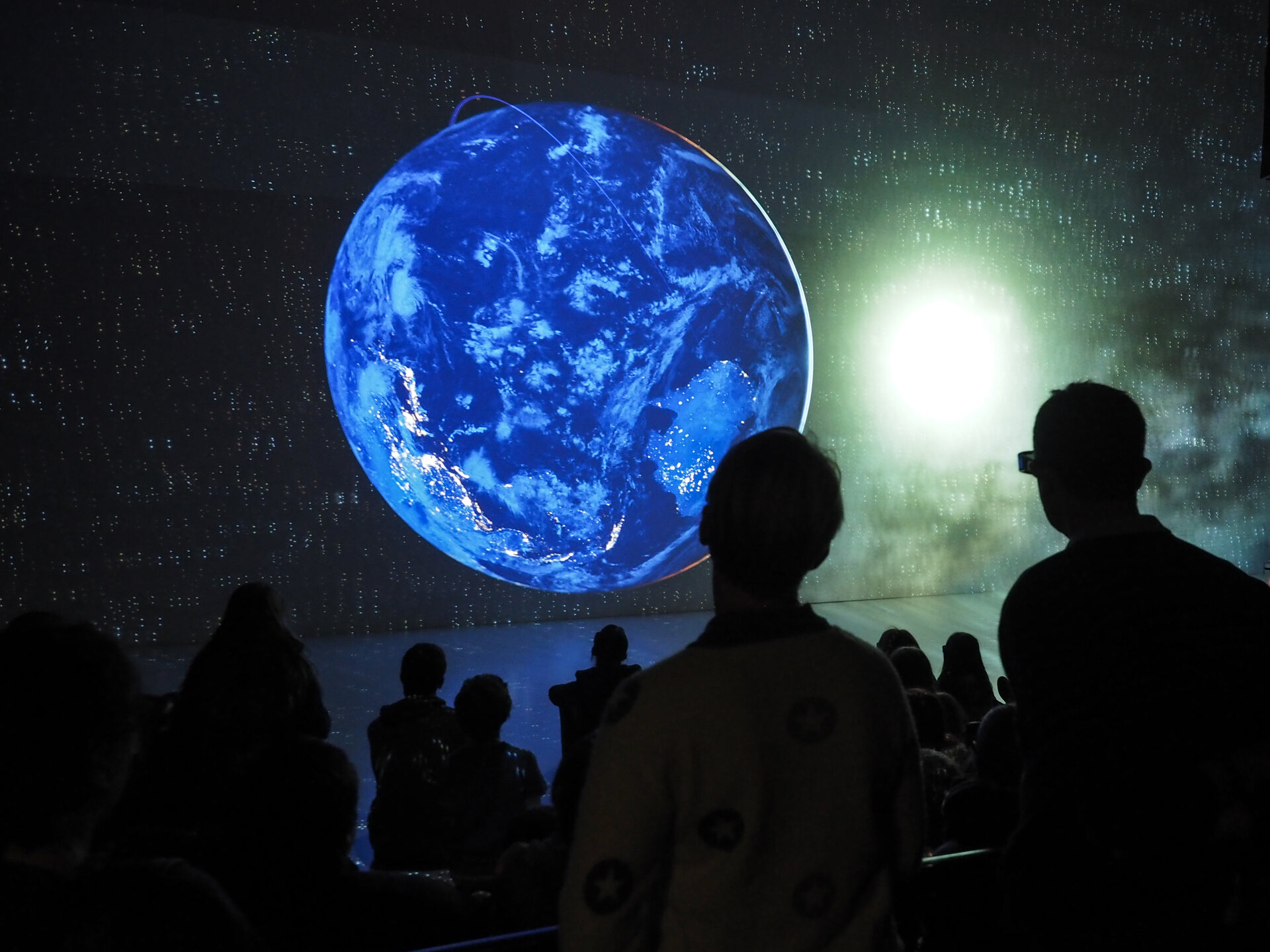Thank you Paolo for a great Inflight Call!
On Monday 4 December, teachers from Czech Republic, Austria, Finland and Italy had the opportunity to talk live with ESA Astronaut Paolo Nespoli, who is currently living and working on the International Space Station (ISS) for the VITA mission.
Hundreds of primary and secondary school teachers and students, as well as space scientists and engineers, gathered at national events in Prague, Linz, Vantaa, and at ESA’s ESRIN centre in Frascati, to participate in the call with Paolo – the opportunity of a lifetime! Several teachers had the opportunity to ask questions surrounding the theme: life in space.
"Today is a dream come true for me. Ever since I was a child I’ve been fascinated by space, and to be able to see and speak to Paolo Nespoli on the International Space Station is just amazing." - Elisa Piovesana, Italian teacher
“It was a great experience to ask a question live to an astronaut who flies on the ISS. Interesting to hear how astronauts cope with living in a totally different environment and try to adapt to this. Especially for research into a future long-term stays in space.” - Jonas Pått, Finnish teacher

In particular, Paolo answered the following questions:
- When the new generation of spaceships will be built, do you think they will include a centrifuge module that would mimic gravity to help counteract the effects of microgravity?
- How does the stay in space affect your psychological health? Are there experiments that study this?
- Where does the oxygen on the International Space Station come from? Are there plants on board that help produce breathable air?
- Many films depict humans living in space and on space stations. What are some of the biggest inaccuracies, from a scientific perspective, regarding how the human body behaves in microgravity?
- Every day on the ISS you experience 16 sunrises and sunsets. During a long term stay on the ISS, how is your ability to perceive time affected and how do you try to maintain your biological rhythm?
- Do you use cotton clothes in space, or do you prefer synthetic clothes that do not leave as much dust? And if it gets dusty on the ISS, how do you clean it?
- When you spend a long time in space, at what point do physical changes, such as muscle loss, become noticeable and how do you deal with it?
- In the future, what are some of the main challenges humans will face if we want to live on another planet?
- We have recently seen an inflatable module attached to the ISS. Are there any differences between living and working in an inflatable habitat compared to the traditional ISS modules?
Watch the recording of the live-streamed inflight call here.

About the events
The events in Czech Republic, Austria, and Finland were coordinated by the European Space Education Resource Offices (ESERO): ESERO Czech Republic, ESERO Austria, and ESERO Nordic. The event in Italy was coordinated by ESA’s ESRIN centre, and the Education team at the Italian Space Agency (ASI) and the ESA Education Office.
- Czech Republic: Hosted at the Czech Technical University Prague, the local event featured talks from technical experts on astrobiology, living in space, and the possibility of life on other planets. Participants also had the opportunity to experience a virtual reality moon base and a mobile planetarium.
- Austria: Hosted at Ars Electronica Center, the local event consisted of a virtual visit to space using the Deep Space 8K immersive projection wall, presentations from speakers, and space-related workshops to be used in classrooms.
- Finland: Hosted at Heureka, the Finnish Science Centre, the local event allowed participants to take part in hands-on workshops on how to build a sundial and spectrometers, as well as, hear from an expert lecturer on the theme Living in Space.
- Italy: Hosted at ESA’s ESRIN establishment, the local event invited participants to see a series of talks about Life in Space, the ISS and Human Exploration, and information about the ASI Education and ESA Education programmes.

Background
The inflight call with Paolo Nespoli is part of a vast range of educational activities delivered by the ESA ESERO project. There are currently 12 operational ESERO Offices across Europe, covering 14 ESA Member States. ESA’s ESERO project is a collaboration between ESA, national space agencies, and educational partners.
ESEROs design and disseminate classroom resources – all tailored to the national school curricula and language - which make use of space to make teaching and learning of STEM subjects more appealing and effective. In addition, they offer teacher training workshops and conferences for both primary and secondary school teachers, and support educational hands-on projects in the country. Through their activities, ESEROs also raise awareness about STEM-related career prospects, and promote the importance of space in our daily lives.




